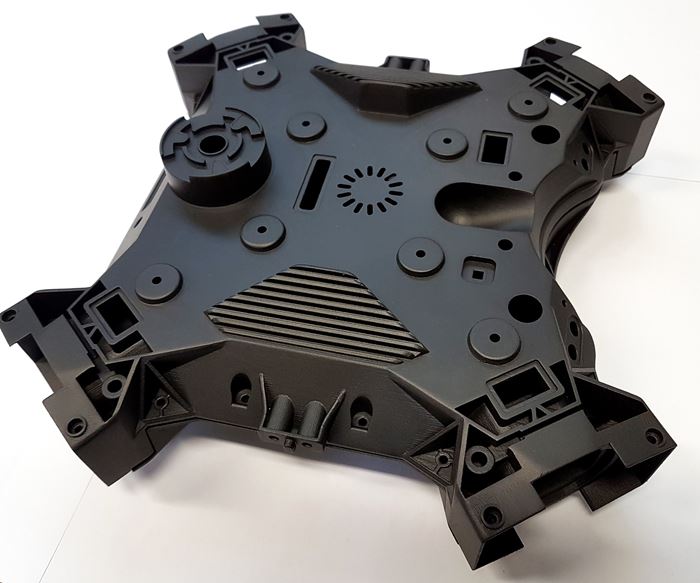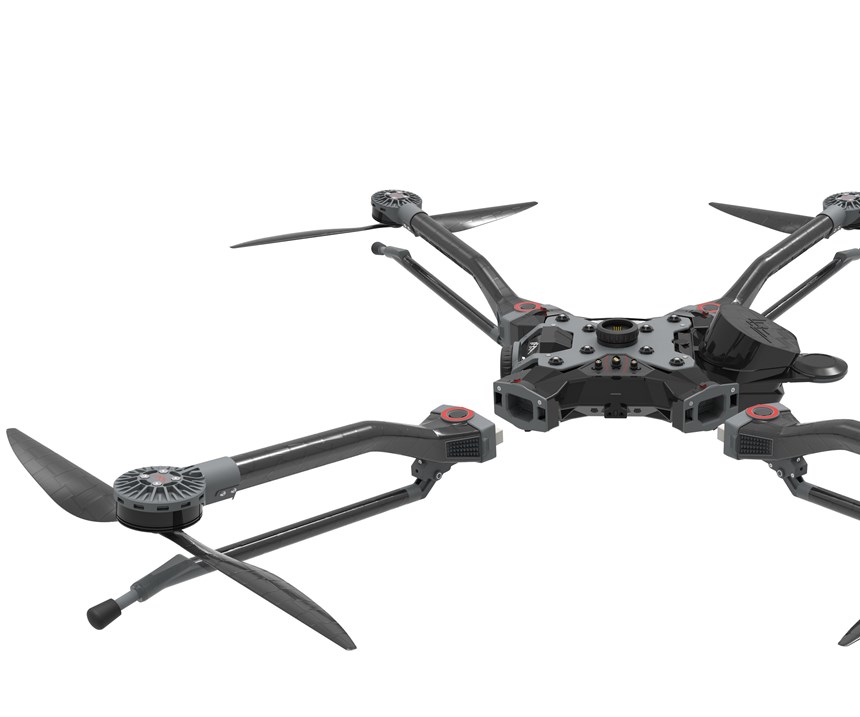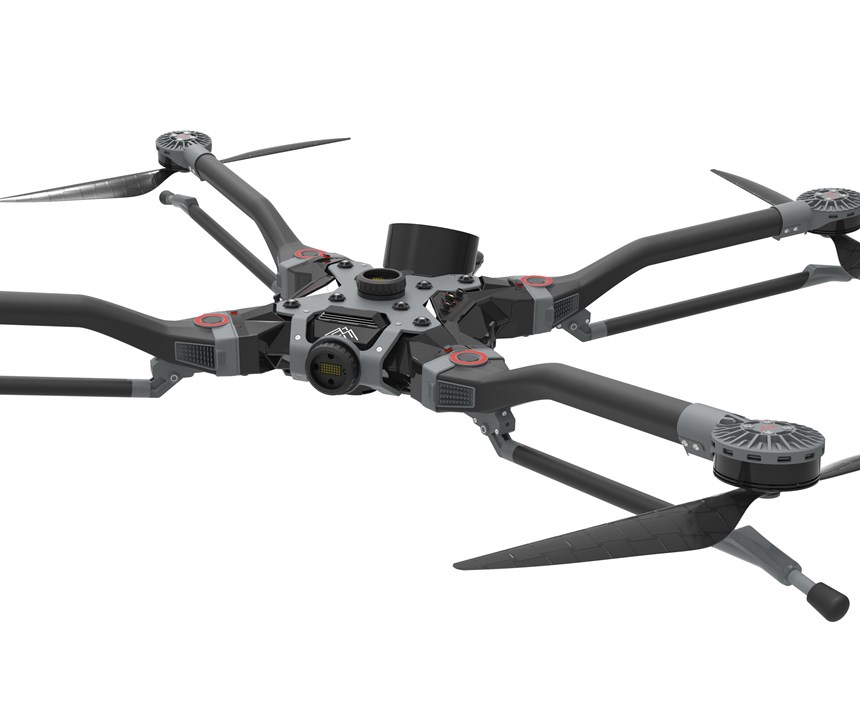Durable UAV speeds to production
3D-printed prototypes used to accelerate design iterations and expedite manufacturing plans.
Unmanned aerial vehicle (UAV) manufacturer Hexadrone SAS (Saint-Just-Malmont, France) was looking to develop and mass produce a new, easy-to-use yet robust UAV, one that could function in harsh military, industrial, firefighting or agricultural environments. In answer, a new UAV called the Tundra-M, conceived by industrial designer Raphael Chèze, and designed for use in rugged environments, was developed over a period of two years, says Hexadrone’s CEO Alexandre Labesse.
The Tundra-M has a central, square chassis or frame (complete with an emergency parachute) and four extended arms that support motors and propellers as well as smaller accessory rods or extensions; arms/extensions are quick-connect enabled so that customers can quickly swap out arms and accessories with different equipment and features. A landing foot structure on the back of the central frame supports landing loads.
Before the UAV could enter production, it had to be prototyped and tested. Hexadrone made the decision to use selective laser sintering (SLS) technology to produce functional prototypes, in collaboration with CRP Technology (Modena, Italy), to accelerate design iterations and expedite its proposed plans to manufacture its parts from lightweight carbon fiber-reinforced plastic (CFRP) via injection molding.
The UAV’s four arms and propellers were 3D printed using CRP’s Windform XT 2.0 carbon fiber-filled polyamide, a newer version of Windform XT with greater tensile strength and tensile modulus, and a 46% increase in elongation-at-break.
The Tundra-M’s body/chassis components and removable lid were developed with CRP’s Windform SP carbon fiber-reinforced polyamide. Also similar to XT 2.0, SP reportedly exhibits greater impact strength and elongation at break than XT, and demonstrates increased resistance to shock, vibration and deformation, has higher temperature resistance, and resists moisture uptake to help protect the batteries, cooling system and electronics.
During printing, CRP monitored thermal effects of the sintering process to maintain part precision as the layers were built up because slight “gains” in layer thickness can compromise finished part assembly. The 3D printed materials reportedly proved able to withstand the calculated flight stresses, which include compressive and tensile as well as vibrational forces.
Flight and landing tests confirmed the prototype’s operability, while assembly/disassembly tests of the various parts helped with design for manufacturing. Says Labesse, “The Windform laser sintering technology allowed us to quickly prototype key components of our product, at a lower cost and much faster than plastic injection molding, and enabled us to have a flyable prototype with almost the same mechanical characteristics as injection molded plastic,” says Labesse.
The Tundra-M just won a 2018 Red Dot Award from Red Dot GmbH (Essen, Germany) for outstanding product design.
Related Content
-
Plant tour: Joby Aviation, Marina, Calif., U.S.
As the advanced air mobility market begins to take shape, market leader Joby Aviation works to industrialize composites manufacturing for its first-generation, composites-intensive, all-electric air taxi.
-
The potential for thermoplastic composite nacelles
Collins Aerospace draws on global team, decades of experience to demonstrate large, curved AFP and welded structures for the next generation of aircraft.
-
Bio-based acrylonitrile for carbon fiber manufacture
The quest for a sustainable source of acrylonitrile for carbon fiber manufacture has made the leap from the lab to the market.



















